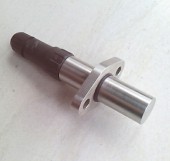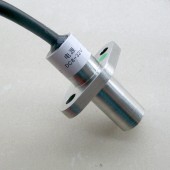| Guidance 指路人 g.yi.org |
software / rapidq / examples / gui / Edit & Richedit / editor / Rapidq2 / newqhelp.txt |
|
10/14/03 Newq Edit - Version 1.10 Welcome to Newq Edit, a general purpose text and programming editor written in and for RapidQ. This file should answer most questions about how to use the editor, and provide a little background. The easiest way to use Newq is to unzip it or move it into the same directory as your compiler . The need came about because for some reason the IDE which came with Rapidq had a terribly annoying habit of erasing my source code at random intervals. This happened several times and so I decided to write my own editor. I don't really care about syntax highlighting, or drawing my interfaces, so this Editor is the result. Newq will create an .INI file the first time you run it and any changes made in the options dialogs will be stored there. If things get really ugly just delete the .INI and start over. Newq is sort of an ongoing process, when I need to use something often enough, I add it to the program (if I can figure out how, still working on GOTO). Feel free to use any or all of the code in here as some of it is my own and some came from books and some came from example code on the internet. If you make an improvement (plenty of room there!) I wouldn't mind being sent a copy of the changes, might need them. If you run into a signifcant problem with the editor let me know. I also frequent the Rapidq group on Yahoo.Com, (Great source of inspiration and code snippets!) ,so I'll eventually see any comments there. NO WARRANTY EXPRESSED OR IMPLIED, IF YOUR CODE GETS EATEN I'M NOT REPLACING IT. IF YOUR COMPUTER CRASHES, I WAS NOWHERE NEAR. NOT RESPONSIBLE FOR FLOODS, EARTHQUAKES, FLEAS OR OTHER NATURAL DISASTERS. An overview of the menu system is as follows: FILE ---- New - Opens a new, blank page. If a file is already in the buffer that has been modified, you'll be prompted to save the changes before opening a new file. New uses noname.bas as the default file name. Open - Opens a file dialog to existing files. Also provides a prompt to save any changes. A backup file with the extension .BAK is automatically created when a file is opened or compiled. Save - Opens a file dialog to save the current file. Save As - Opens a dialog to save the current file with a different name, or in the case of a new file gives you a chance to provide it with a name. Print - Prints the current file, in it's entirety. I haven't gotten around to printing selections yet. Exit - Quits the program, again prompting to save changes. EDIT ---- Undo - Provides a basic one layer undo. Insert Date - Puts the date whereever the cursor is. Insert Time - Puts the time whereever the cursor is. Delete Line - Removes the entire line and backs up to the previous line. Cut - Removes hilighted text. Copy - Copies text to the clipboard. Paste - Pastes from the clipboard to the cursor location. Select All - Pretty much what is says. SEARCH ------ Search/Replace - Pretty darn good search and replace, took forever to get it right. RUN --- Run - Compiles and runs program, creates a backup of the file. Compile - Compiles without running, creates a backup of the file. Console - Used to be a DOS prompt, now I suppose it's a Windows prompt. Options ------- Line Wrap - Turns line wrap off and on, if you like that sort of thing. Editor Options - Default File Types - What extensions are shown in the file dialog boxes, allways adds *.* (all files) as last choice. Font Color - I've debated on adding a font dialog box, but haven't gotten around to it. I added this and background color while playing around. BackGround Color - See Font Color above. Path to Command Prompt - Windows versions prior to Win2000 used Command.com, later versions used Cmd.exe. Program Options - Passed on the command line when the program in the editor runs. Compiler Options - Path to Compiler - If the editor is in the same directory as the compiler (recommended) then just use the compiler name I.E. RC, otherwise you have the option of giving a full path. Compiler Options - Whatever options are available will be added when run. Path to Libraries - Again not needed if the libraries and the editor are in the same directory. Path to Includes - Again not needed if the Includes and the editor are in the same directory. Help Options - Path to Compiler Help - Self explanitory. Path to Compiler Help Executable - Whatever program opens your help file. If it's a .HTML file then your browser of choice. a .CHM uses HH.Exe, and a .TXT can use Notepad or any other editor. Path to Newq Help - The help file for the editor. Path to Newq Help Executable - See Compiler Help Executable above.. HELP ---- Contents - The Compiler help file, see Help Options above. Help - The Editor help file, see Help Options above. About - Blurb with version and contact info. |
|
| © Thu 2025-5-22
Guidance Laboratory Inc. Email:webmaster1  g.yi.org Hits:0 Last modified:2003-10-14 14:42:34 g.yi.org Hits:0 Last modified:2003-10-14 14:42:34
|
 |
|||
|
|
 搜索
搜索 论坛
论坛 Home
Home 回顶部
回顶部







